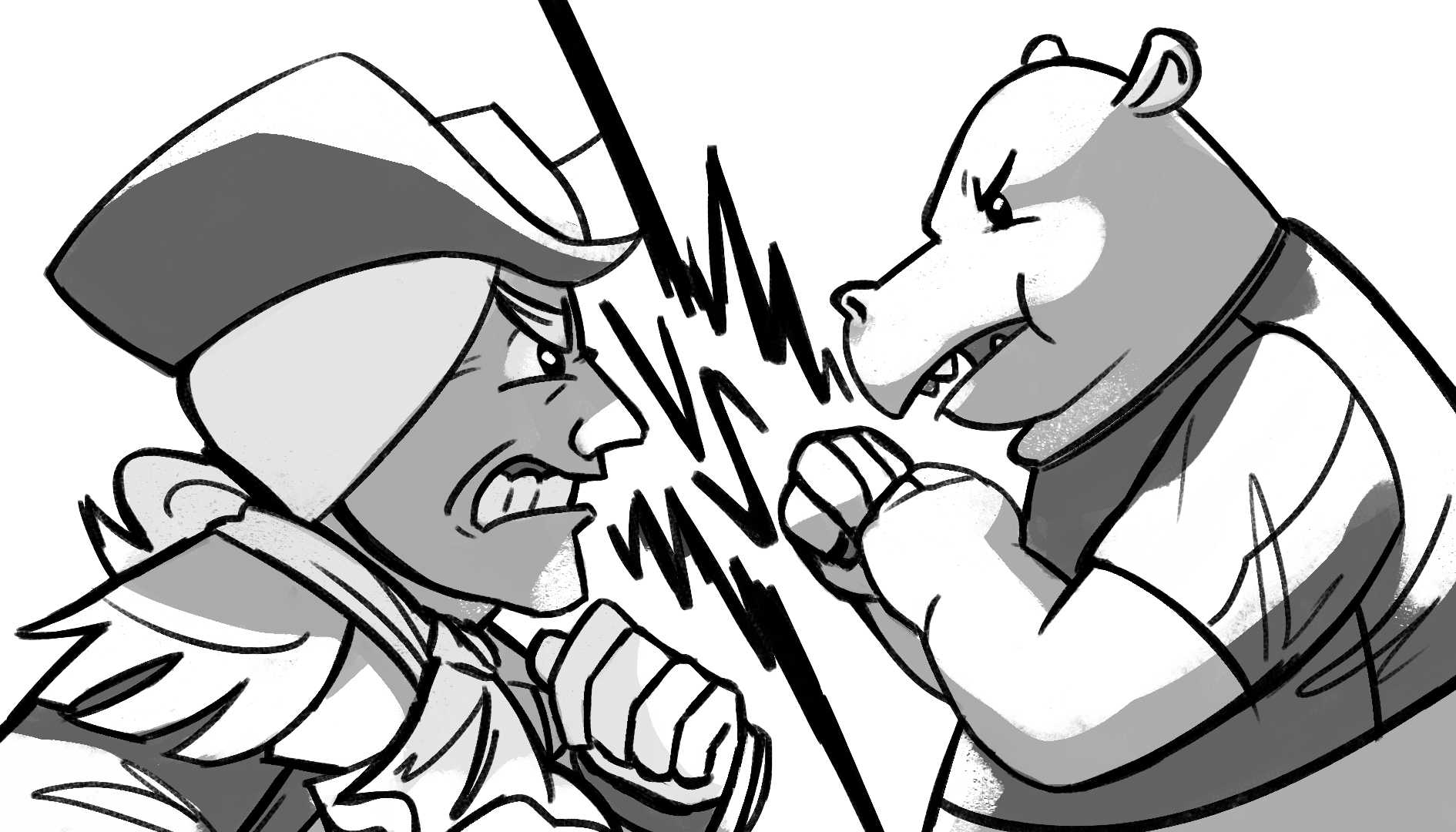The United States has not had a perfect past. From slavery to the Trail of Tears and Japanese internment camps, there have been errors in our history that we can’t erase. In naming streets, cities and states, our history is reflected back on us – both the best and worst of it. But there are aspects of history that celebrate our wrongdoings rather than criticize them, and that includes GW’s mascot.
The name Colonials is an example of celebrating the colonization of Native Americans and slave ownership. As GW comes to terms with its past and enters a new presidential era with University President Thomas LeBlanc, who has placed a focus on improving inclusion on campus, it’s time to change the Colonial to the unofficial mascot – the Hippo.

Cartoon by Jeanne Franchesca Dela Cruz
With the Colonial as our mascot, we are implicitly supporting colonization, not just in sports games, but in any school event where the mascot appears. Some students might not realize it, but colonials come from a racist part of America’s history. Colonialism in the U.S. and across the globe has a long history of cultural oppression and violence toward native people. By using that mascot, we ignore the historical tragedies that colonialism started. LeBlanc said earlier this year that the spread of a racist snapchat “has clearly signaled that racial tension at the University needs to be confronted.” In order to move forward, we can’t have a mascot that represents the genocide of Native Americans and the violence that slaves faced.
Students and staff can argue that cheering for the Colonials, or being in the Colonial Army – the name of our fan squad – isn’t the same thing as cheering for colonization. But for international students – who made up 10.8 percent of the student body in 2016 and may face colonization in their own countries – this isn’t a fan squad, but rather, a reality they face back home.
The lack of property rights on Native American reservations or the disproportionate amount of police brutality against black and brown people shows the inappropriateness of our mascot. The Hippo, GW’s unofficial mascot that stems from former University President Stephen Joel Trachtenberg’s gift to the Class of 2001, is not related to negative connotations and only serves as a fun and adorable symbol. We would also be unique as a school, as there is no other university with a hippo as a mascot and only one high school with it in the U.S.
Changing the Colonial to the Hippo doesn’t mean we have to ignore our roots. The University should keep its name and students can still be proud of being named after the first president. If we publicly recognize the grievances that George Washington committed, like slave ownership and anti-Native American policies, by condemning racism and slavery, we can and should still be connected to George Washington as we separate ourselves from colonials.
When individuals go to events such as the Chinese New Year Parade or the South Asian Heritage Celebration and see our mascot, the disparities in the experiences of white American students and students of color are highlighted. Students of color can especially see the hypocrisy in a Colonial celebrating cultures that survived oppression or were drastically changed due to colonialism. But at Hippo Day, the first celebration of the Hippo in February, the Hippo provided a sense of unity and raised students’ spirits. Hayley Margolis even ran a Student Association Senate campaign this spring that included changing the Colonial to the Hippo.
Changing the mascot to the Hippo wouldn’t be the first mascot change for the University. In 1926, GW changed from the Hatchetites to the Colonials, and the sports opening celebration was called Colonial Invasion until it was changed to Colonial Madness in 2015. This change was due to the negative connotations that Colonial Invasion has of genocide and imperialism. Now it’s time for the mascot to change to stop the trivialization of oppression.
GW would be joining a long list of colleges, like Dartmouth and Stanford universities, both previously the Indians, which changed to be more inclusive. Binghamton University was also dubbed the “Colonials,” but changed to the “Bearcats” in 1999 in order to have a mascot that was “powerful and dignified,” as Binghamton became part of NCAA Division I.
GW has faced issues about its past before. The issue of recognizing grievances can also be seen in the names of buildings, like the Marvin Center and the Confederate statues in campuses around the U.S, like at the University of North Carolina at Chapel Hill. In September, the SA launched an informal task force to examine the names of GW’s buildings. Former University President Cloyd Heck Marvin was a strong supporter of segregation and suppressor of academic freedom, and students have long called for the student center to be renamed. In the same way, changing the mascot to be more welcoming is another way GW can move toward a more inclusive future.
The University is moving on to a new era of acceptance. GW will begin mandatory diversity trainings for students and staff and update the Student Code of Conduct next fall, but there is more they can to do be more inclusive. Changing our mascot is an important step the University can take to create an atmosphere that values the comfort of its students over tradition.
Alejandra Velazquez, a freshman majoring in political science, is a Hatchet columnist.
Want to respond to this piece? Submit a letter to the editor.


